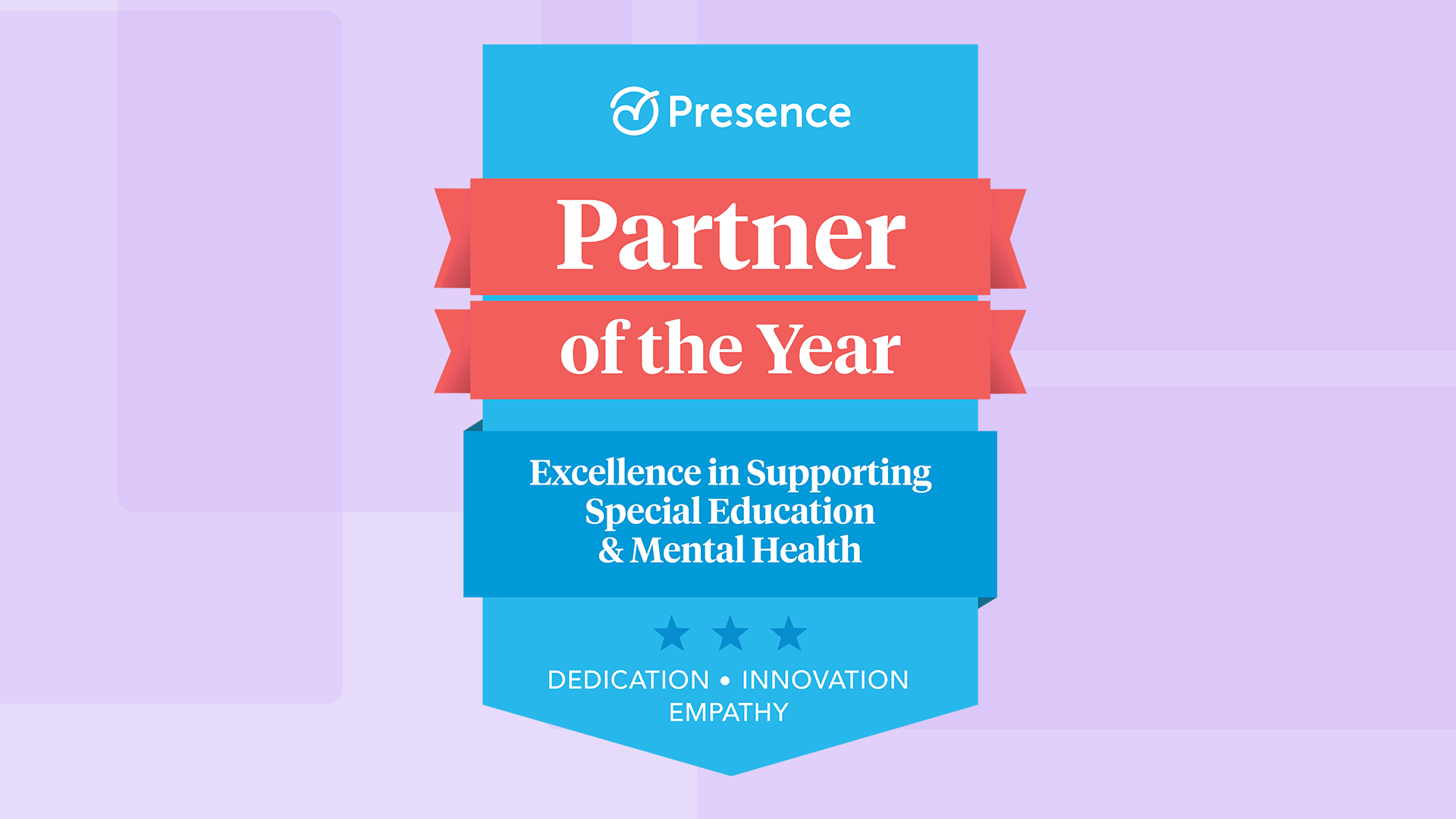
The first webinar in the “Eureka! Big Ideas for Big Changes in SPED” webinar series was with scholar, author, and speaker Dr. Lori Desautels. During “Big Ideas in Neuroscience: Brains, Behavior and Engagement for Students and SPED Leaders,” Dr. Desautels discusses how understanding neurodiversity is the first step to creating a positive learning climate for all students. After the webinar, our co-founder and co-CEO Clay Whitehead and Dr. Desautels answered webinar attendee questions about neuroscience’s role in behavior management. Below is a summary of their discussion.
Clay: You mentioned, in the latter half of the presentation, that some educators you work with have set up an amygdala reset station for teachers to use. What’s in those stations?
Dr. Desautels: These amygdala first aid stations, or amygdala reset stations (pictured in this webinar’s resource handout here), only help students regulate their behavior if they move there before they reach that “point of no return.” If a child is throwing a desk or chair, they’re not going to do a focused attention practice, and they’re not going to be regulated enough to move themselves to an amygdala first aid station. We know that the brain, and if it’s distracted in a positive way, it can up-shift quicker.
To keep students distracted, teachers put materials like paper, colored pencils, “Where’s Waldo?” books and storybooks, stress balls, snow globes, journals, pillows, blankets washed in lavender detergent, scented markers, and hand lotion in the station. I’ve also seen some teachers keep a jar of positive notes in these stations. If a child really needs an affirmation, they can pick a colored post-it out of the jar.
Clay: How does teaching students about their own brains as they grow affect their behavior, and what have you seen when people take this approach?
Dr. Desautels: When we teach students about the amygdala, the hippocampus, neuroplasticity, and prefrontal cortex, it gives the brain science. It objectifies their behavior. That’s why we asked students even as young as kindergarten questions such as, “What’s the weather in your brain today? Are you having a tsunami? Is there a thunderstorm? Is it partly cloudy?”
Many of my undergraduate students said they wish they would’ve known neuroscience in middle school because students think something is wrong with them when they exhibit negative behavior. When students understand the science behind it, it intrigues them and they’re challenged to change those hard-wired circuits. That’s the beauty of this.
Clay: During the webinar, you mentioned the recent movie Inside Out and how it helps children learn about the brain. What are other ways can you instruct children about their brains?
Dr. Desautels: There are so many resources, but first, it’s important that we tap into the student psychology and learn how to emotionally connect with them. What does that mean? When I started teaching 7th grade a couple of years ago, it had been a long time since I had lived with a 7th grader so, I studied what they do on the weekends, what songs they were listening to, what type of clothing they wear and what’s new in stores.
There’s a wonderful video series called the Sentis Brain Animation Series that I’ve been using as a resource. They are short animated videos that discuss emotions in the brain and neuroplasticity. We share them with students in grades K-12. Dr. Eric Chudler of the University of Washington has a neuroscience club and newsletter. There are also many wonderful documentaries. Students love the National Geographic show called “Brain Games.”
Clay: What are the best ways for us to reduce cortisol levels in students and in special education teachers?
Dr. Desautels: First, I want to address the teacher brain state because there are many things for teachers to stress about. Merit pay, test results, over-packed curriculum, and meeting standards are just a few. Even when teachers try to incorporate important things like brain intervals into their classes, they can’t because the day is just so packed.
To help regulate cortisol levels, you can take 10 deep breaths, go for a little walk, or just turn your back and take some breaths. I cannot emphasize the importance of this enough. Students are so savvy at reading nonverbal communication so even if you have a smile on your face, they know exactly how you’re feeling. Also, it models from them that it’s ok to take a break if you’re frustrated and come back to a challenging task once you’re “back in” your frontal lobe.
That’s the beauty of teaching students about their neuroanatomy, because we can actually say, “I can’t talk to you right now, I’m in my amygdala.” Some teachers may say, “Students might take advantage of that,” but they really don’t. It’s so powerful when you teach them what cortisol does to brain tissue, and how they can use breath and movement to regulate and reverse those effects.
Clay: Let’s talk about families for a second. How do we best communicate stress-reducing strategies to families, especially those who lack effective boundaries with their kids?
Dr. Desautels: The first thing that came to my mind is that we have to teach our families about this neuroscience the same way we teach our students. I work with parent groups, and I go into districts, and we’re teaching parents about neuroscience and how it fits into discipline. The brain craves boundaries, routines and structures, but there are also ways that we can discipline as parents and teachers that allow us to see compliance or obedience, and also a true shift in a brain state. The parents love learning about neuroanatomy because they feel included and empowered.
Clay: Can you tell us the simplest brain-aligned activity that helps students succeed as learners?
Dr. Desautels: I think teaching them brain intervals and using those brain-aligned bell-ringers are best. I wrote an article in Edutopia called “Ring Their Bells.” It lists 10 bell work activities that use novelty, anticipation, and curiosity to start off the day. These 10-minute exercises engage students because novelty is what the brain craves.
Here’s an example of a bell ringer activity that works for elementary, middle or high school students. I bring in a pair of torn blue jeans with a note in the pocket, and I lay them out at the front of the classroom. When the students walk into the classroom, I give them a half-sheet of paper and ask them to answer three questions I wrote on the board:
- Who has worn these pants?
- Where have they traveled?
- What does the note say?
They can work individually or in partners, and they can write down the answers to these questions or draw them – but they will have to share with the class in six or seven minutes. At first, they look at me like I have 10 sets of eyes and laugh, but I can’t tell you how excited they are and how much they want to share at the end of those seven minutes. It takes them into that creative, cognitive flexibility mode that can so easily be shut down by stress.
Clay: How do you suggest we present these ideas to our middle school students so they understand everyone’s mind is different and we need to be considerate of one another?
Dr. Desautels: I’m laughing as I hear that question, because when I went into 7th grade, this is what I learned about 7th grade. They laugh all the time, even when things aren’t funny. Those of you who teach middle school know this to be true: it’s their defense mechanism.
We lose a lot of good teachers in middle school because this age group is so misunderstood. In middle school, research says we lose 50 to 80% of our capacity as we gain efficiency, so we’re pruning back all the things and walking around with half our minds. How do you propose this to middle school students? First, get them excited about what’s happening when they’re stressed out and when they’re feeling anxious. Have fun with it. Talk to them about the amygdala.
Another thing you can do with middle school students is introduce them to multiple intelligences. Many students find middle school traumatic because teachers really focus on two of the intelligences: math and language. What you can do instead is give the students a multiple intelligence survey, which is an assessment that determines their strengths, interests and their areas of expertise. Using this, we help them research options for their futures. We look at degrees and colleges, as well as vocations and certifications that align to strengths and interests. Middle school students love this because not every student wants to go to a four-year college.
Clay: How do we crack the balance between keeping stress responses in check while also keeping the brain engaged?
Dr. Desautels: That goes hand-in-hand. From my experience, priming the brain is so important. This can be as simple as starting the day by playing soft, instrumental music, doing a brain-aligned bell-ringer or having everyone complete a focused attention practice for 90 seconds. That’s all it takes to open up the prefrontal cortex, quiets the amygdala, and decreases cortisol – all of which together increase engagement.
Instead of spending 15 minutes redirecting behavior, you can spend a short amount of time at the beginning of class getting everyone ready to pay attention.
Clay: This will be our last question. Many students who have been exposed to trauma spend so much time reacting in a fight, flight, or freeze mode. What one proactive and reactive strategy do you suggest for these students?
Dr. Desautels: Trauma is held in the right hemisphere, which means it’s an emotional, visual, and implicit experience. One proactive way to combat trauma’s effect on a student is to teach them procedures such as attention practices that are going to help them feel positive emotion. This could be a focused-attention practice, a movement exercise, giving themselves a hand massage with lotion, taking a walk or going into a amygdala reset corner.
The goal is to use enough of these proactive measures so reactive measures aren’t needed. However, if a student flips a desk or is cursing, you’ve reached that point of no return. Your goal is for your amygdala to stay calm through it, to stay connected to that child, and that’s hard to do. Sometimes we have to just wait for that wave to pass, and then we begin to redirect.
Clay: We’ve heard a lot of good information today. Many attendees are asking how to contact you.
Dr. Desautels: The best way to contact me is to email me. LDesaute@Butler.edu. You can also message me on Facebook or Twitter. My website is RevelationsInEducation.com. It has a lot of blogs and many of the resources we talked about today, too.
Keep an eye on the blog! Dr. Desautels will be answering many of the questions we weren’t able to get to during Q&A. You won’t want to miss her answers!






